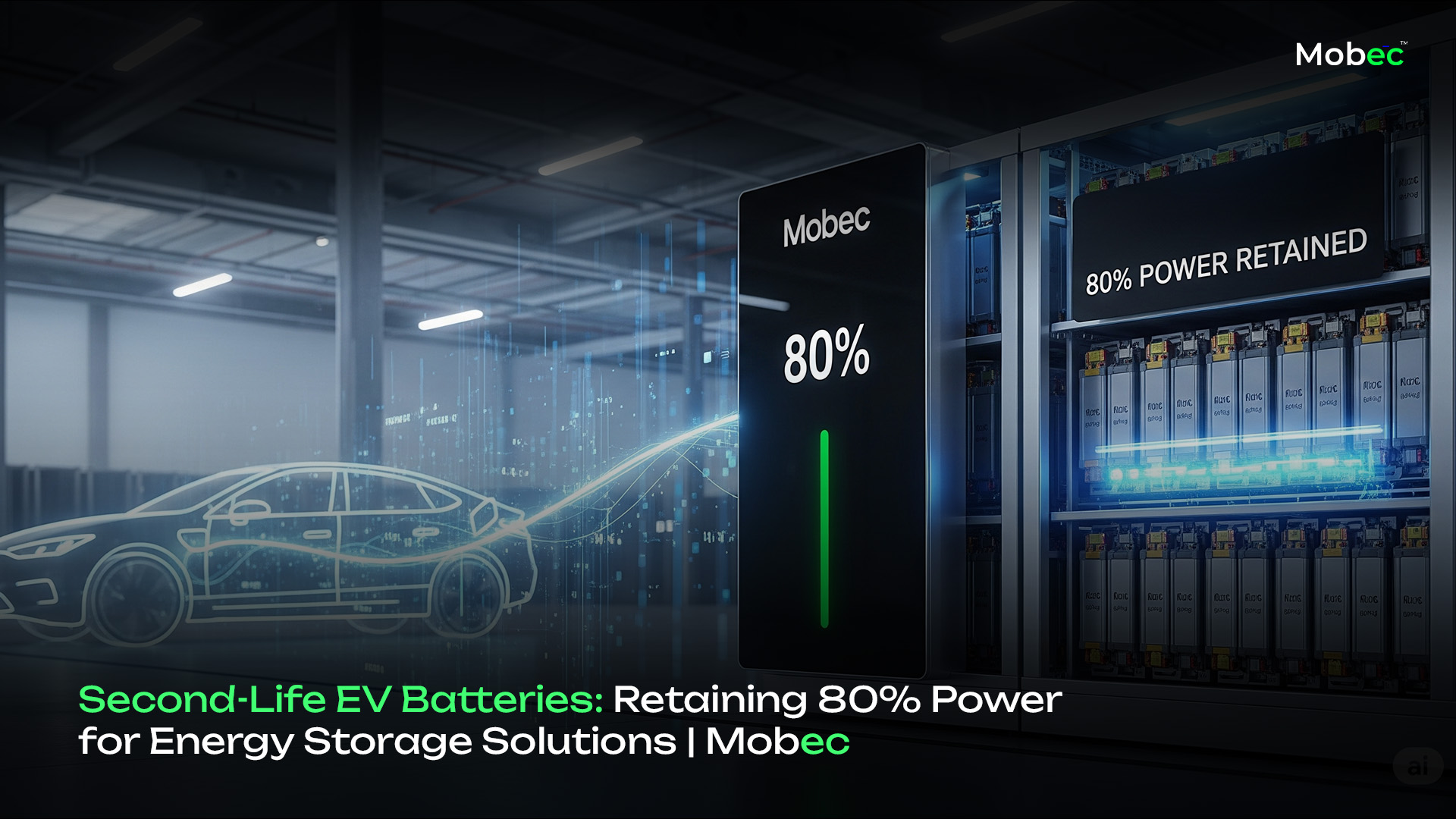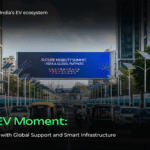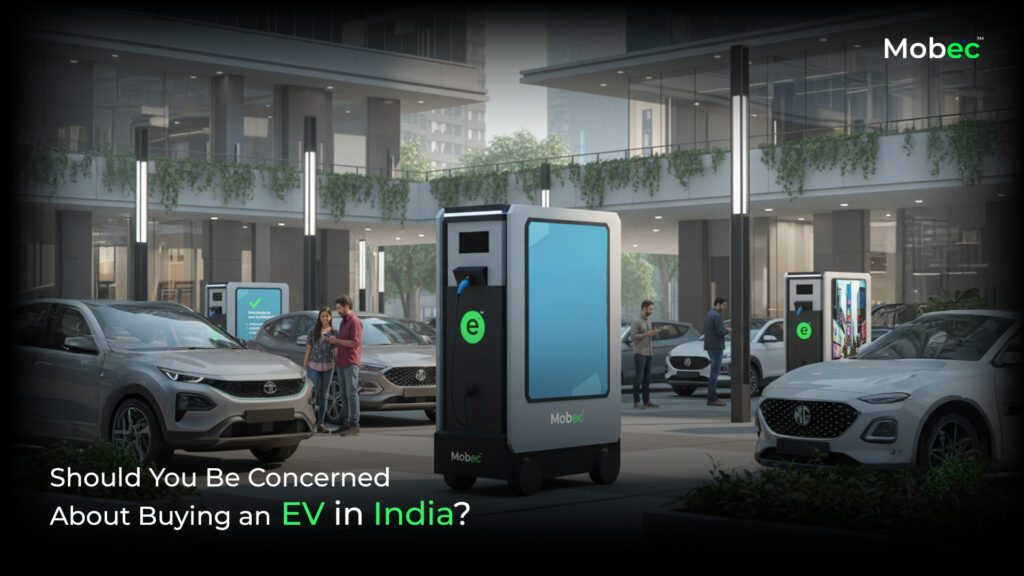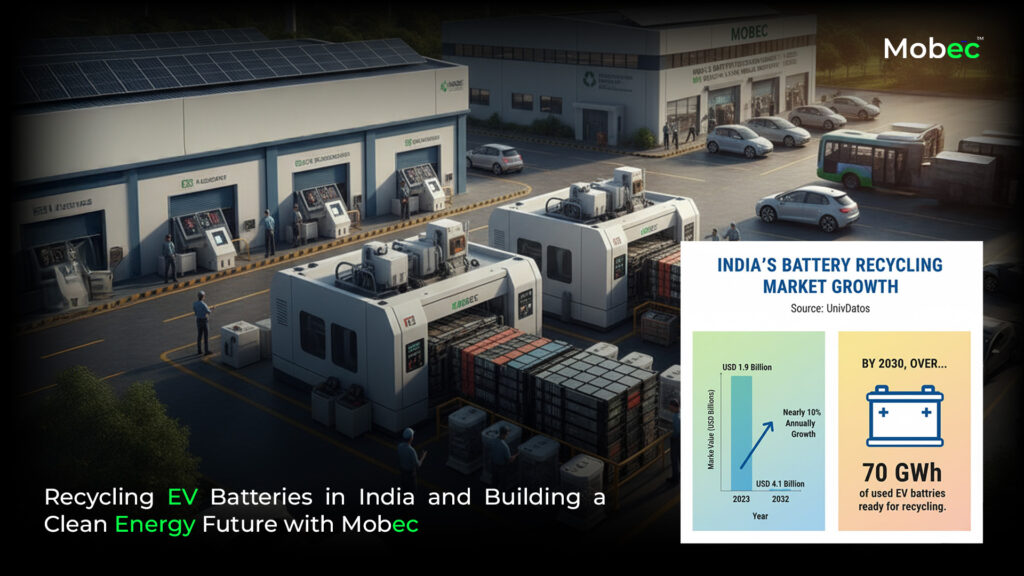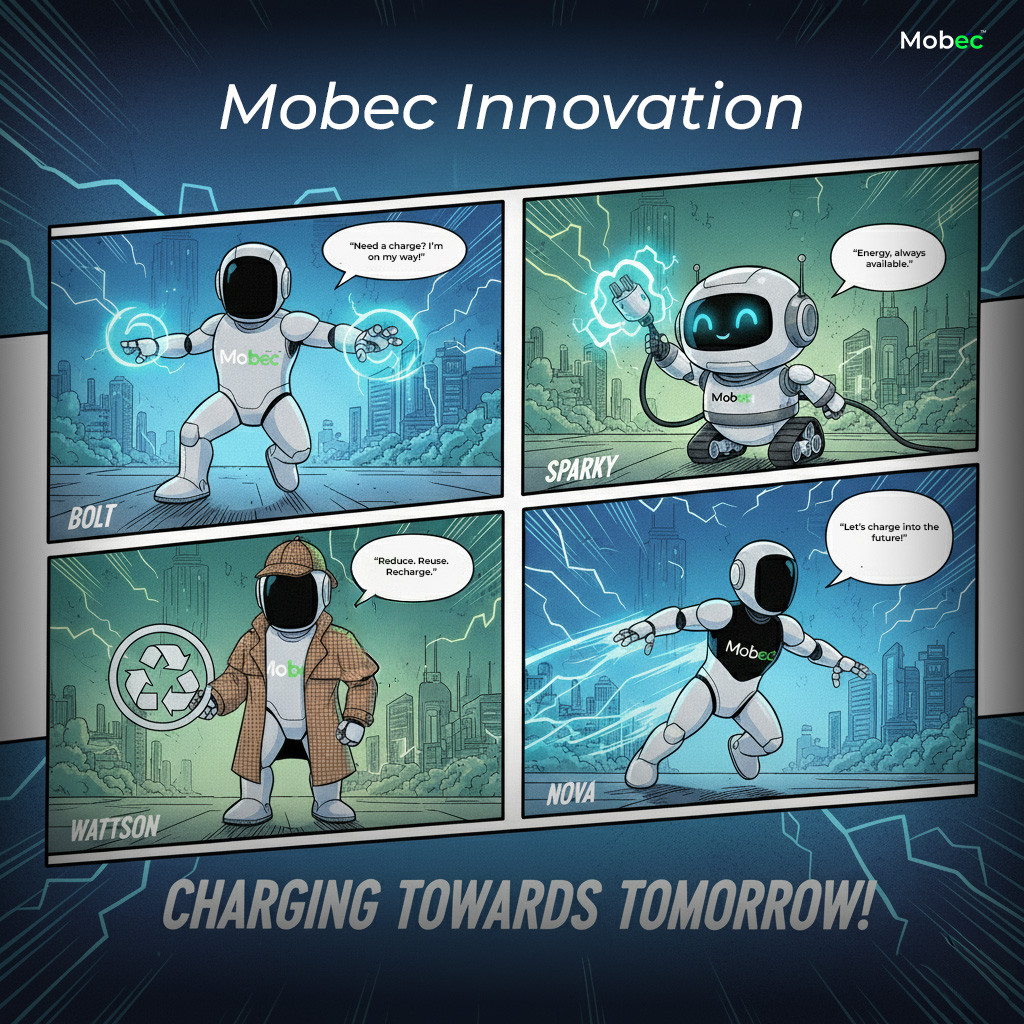When an electric vehicle (EV) or bus’s battery reaches the end of its first life cycle, that doesn’t mean the battery’s story is over.
Inside that battery still lies untapped potential – up to 80% of its original capacity remains. While it may no longer be fit to drive vehicles across highways or city streets, it still has the strength to serve another critical purpose.
This is where second life begins.
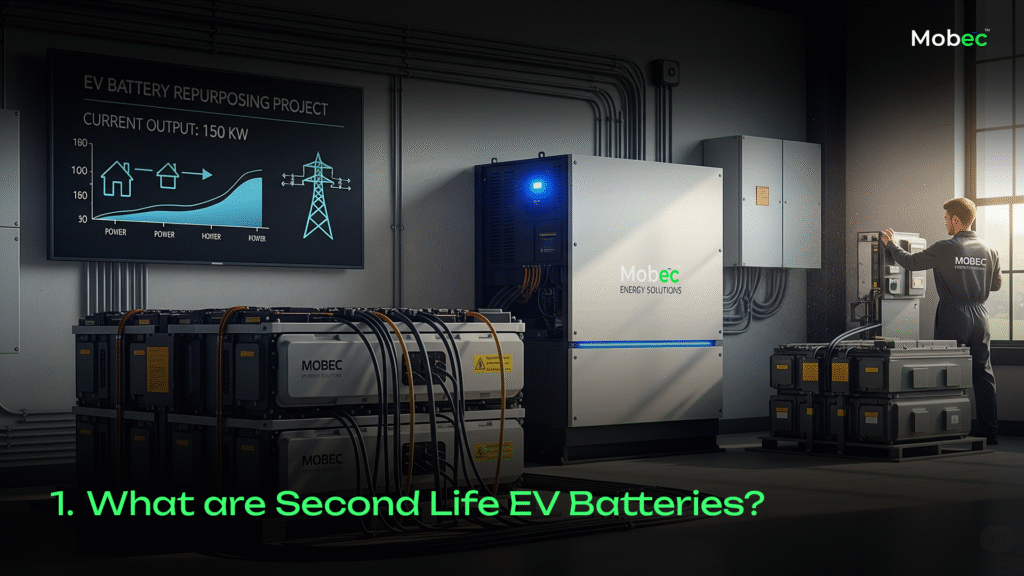
A second-life battery is a used electric vehicle battery that still has plenty of power left and gets a new purpose in energy storage solutions.
Rather than ending up as waste, these recovered batteries are given a new role: powering homes, supporting renewable energy systems, stabilizing power grids, and enabling off-grid storage solutions. Their second life transforms them into powerful tools for sustainability, helping reduce e-waste, lower carbon footprints, and extend the value of each battery far beyond its original purpose.
At Mobec, we don’t see a battery’s end-of-vehicle-life as a finish line – we see it as a fresh start. Because when the first chapter ends, the second is just beginning.
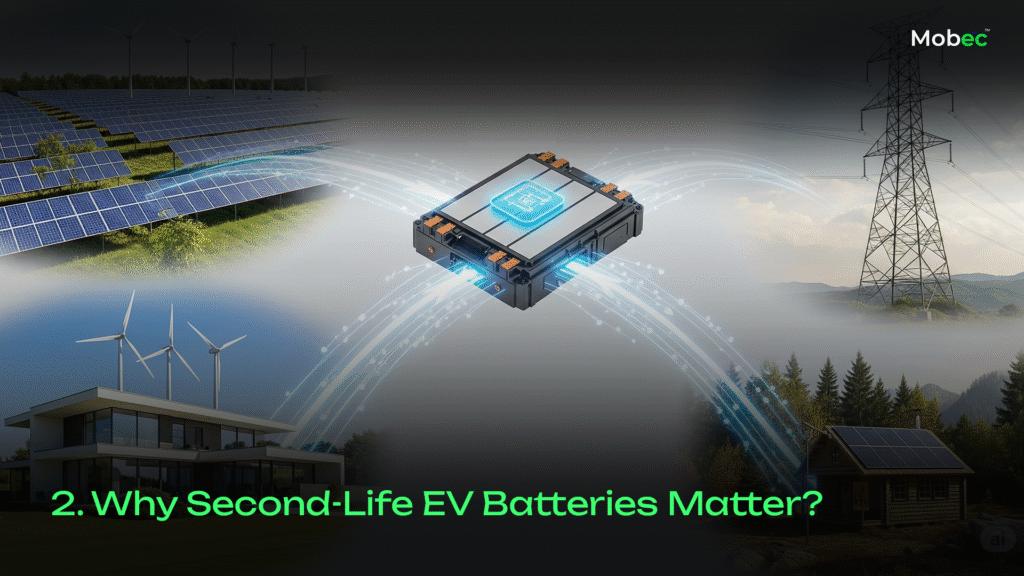
When an electric vehicle (EV) battery no longer meets the performance needed for driving, it still retains up to 80% of its original capacity. That remaining power – often overlooked – is exactly what’s fueling the rise of second-life battery applications.
Rather than discarding these batteries, Mobec is repurposing them for energy storage systems that:
- Support solar and wind energy
- Power homes and commercial buildings
- Stabilize power grids
- Provide backup in remote or rural areas
This shift not only extends the battery’s lifespan but also reduces electronic waste and makes EVs more sustainable – turning what some consider “scrap” into a valuable asset.
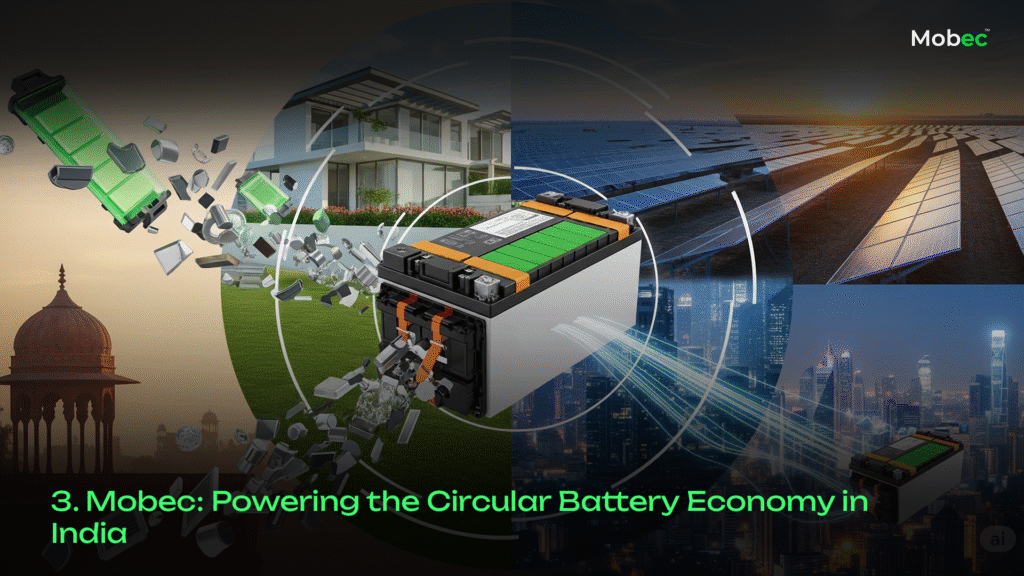
The future of second‑life EV batteries is already here and it’s reshaping how we think about energy. In India, Mobec is making this a reality by giving used EV batteries a new purpose. Instead of going to waste, these batteries can power homes, support businesses, and help build a cleaner, more sustainable energy grid. It’s a smarter way to use resources, reduce waste, and create lasting benefits for communities and the planet.
Here’s how Mobec leads the charge:
- Repurposing Functional Batteries: Mobec converts post-vehicle batteries into powerful energy storage units for residential, industrial, and rural use.
- Supporting Renewable Energy: Our second-life battery systems act as buffers for solar and wind power, making clean energy more reliable.
- Reducing Environmental Impact: By extending battery lifespans, we reduce the demand for raw materials and lower CO₂ emissions.
- Developing Recycling Ecosystems: Even when batteries reach their true end, we recycle key components like lithium, cobalt, and nickel for reuse in new batteries.

For a long time, used EV batteries were treated like waste – something to be thrown away or recycled. Today, that’s changing. In the era of the circular economy, these batteries aren’t waste anymore – they’re a valuable resource. When Mobec takes back an old EV battery, it’s not the end of its life. It’s the start of a new chapter. Through testing and refurbishment, these batteries can be reused for things like energy storage, backup power, and more. By treating used batteries as a resource, we can save important materials, reduce waste, and build a cleaner, more sustainable future – one cycle at a time.
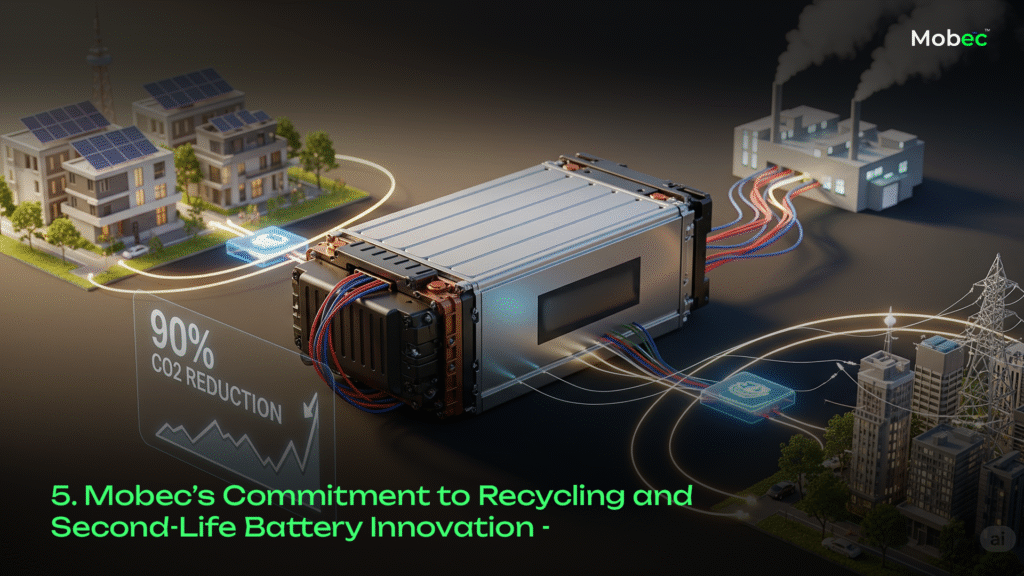
Mobec goes beyond recycling – it gives EV batteries a meaningful second life. When a battery can no longer power a vehicle, every component is carefully recovered, tested, and repurposed. This approach not only reduces waste and landfill impact, but also ensures that valuable materials continue to support a cleaner, more sustainable future.
By using them in grid-scale energy storage or other purposes, we help reduce greenhouse gas emissions by avoiding the energy-intensive production of new lithium-ion batteries – cutting up to 450 tonnes of CO₂ per megawatt-hour.
Repurposing also means less mining for rare materials like lithium, cobalt, and nickel, reducing both environmental degradation and the social impact of resource extraction. It also helps fight electronic waste, turning what would be hazardous landfill into valuable energy solutions.
Mobec’s second-life battery systems support the transition to cleaner energy by: Image
- Enabling local communities to store solar power,
- Helping cities maintain backup energy during blackouts,
- Allowing factories to reduce costs by storing power during peak hours.
This is how we’re creating clean energy access for all – powered by what most people throw away. Through flexible, easy-to-expand systems, Mobec is shaping a future that’s not only eco-friendly, but also strong, accessible to all, and kind to the planet.
Final Thoughts:
The world is waking up to a powerful truth: end-of-life doesn’t mean the end of value.
Second-life EV batteries are changing the game, showing us that sustainability isn’t just about creating greener technologies, it’s also about how we extend their usefulness. It’s about choosing to reuse, repurpose, and rethink what we do with powerful tools that still have so much to give.
At Mobec, we’re on a mission to transform the way India sees used EV batteries. Instead of treating them as waste, we see them as untapped energy, full of potential and purpose. Our approach doesn’t just reduce environmental impact; it unlocks new opportunities for clean energy storage, backup power, and smarter infrastructure.
We’re not just recycling – we’re reimagining.
Through innovation and care, we give these batteries a second chance to serve – as reliable, renewable allies in building a cleaner, brighter future.
So the next time an electric vehicle completes its final journey, remember:
That battery’s story isn’t over. In fact, it’s just getting started. And Mobec is here to make sure it powers on.


